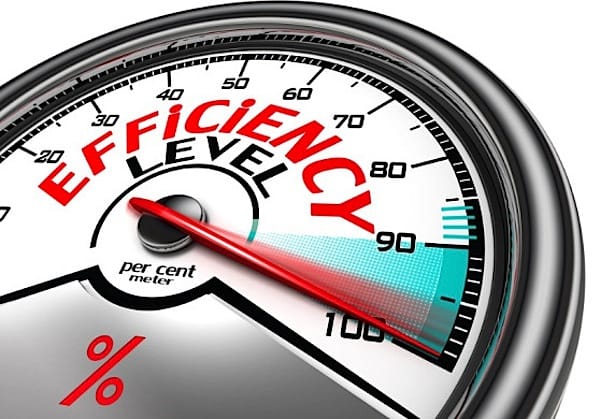2015 marks a year defined by energy efficiency with the April deadline on the NAECA water heating standards, the pump industry moving toward higher efficiencies and products reaching levels of energy standards not seen until now.
NAECA standards
According to Rheem, the U.S. Department of Energy (DOE), as part of the National Appliance Energy Conservation Act (NAECA), issued Final Rule energy efficiency mandates in April 2010. While these mandates only apply to products manufactured for sale in the U.S., Canada will soon implement similar increases in efficiency standards. These far-reaching new requirements will have important impacts on water heating manufacturers, distributors, contractors and homeowners.
Chris Peel, SVP & CEO, Rheem, says that both the HVAC and water heating industries will face some major regulatory changes in 2015. On the HVAC side, as of January 1, 2015, the U.S. Department of Energy has mandated different minimum energy efficiency standards for cooling products based upon the region where the product is installed: Southwest, Southeast and North. The most pressing change is the fact that 13-SEER split system air conditioners can only be sold in the North region. In the Southeast and Southwest, the new minimum efficiency level is 14 SEER.
Water heater manufacturer Bradford White has been informing its customers about the DOE’s Final Rule, which will require higher Energy Factor (EF) ratings on virtually all residential gas, electric, oil and tankless gas water heaters, completely altering the water heater landscape. These changes will have an impact on how water heaters are manufactured, distributed and installed, affecting manufacturers, wholesalers, installers and customers alike. These higher Energy Factor (EF) ratings will go into effect on April 16, 2015. You can view a recent video that Mechanical Hub shot with Bradford White at AHR regarding the standards:
http://youtu.be/cncBFZpmdHQ?list=UUy5qVwECeKwWlUhga7bis1w
Pump Standards
Meanwhile, pump efficiency standards are getting more stringent, where the new regulations will phase out the least efficient pumps in the U.S. market in favor of pumps that meet minimum efficiency standards modeled after regulations already in place in the European Union, says Mark Handzel, vice president, product regulatory affairs, and director, HVAC commercial buildings, Bell & Gossett, a Xylem Brand.
A DOE notice of proposed rulemaking is expected sometime in early 2015, with a final ruling anticipated by the end of next year. Pump manufacturers would likely have four years from the publication of the final rule to comply with the new standards. Handzel explains that while the changes won’t be without financial impact on pump manufacturers, the industry as a whole will benefit from the revisions. First, it levels the playing field in the global marketplace. Without wholesale modernization of the industry, U.S. companies are in danger of losing their competitive advantage around the world. Plus, any pump manufacturers currently operating in Europe must already comply with their more stringent standards, so the new U.S. regulations can help streamline operations for U.S. manufacturers.
According to Robin Roy, director of Building Energy and Clean Energy Strategy at the Natural Resources Defense Council, the DOE has just proposed a long-delayed energy efficiency standard for the natural gas furnaces heating millions of U.S. homes. This is good news for our heating bills and the environment, but it could be even better. The DOE proposal would set a national minimum efficiency level of 92% for gas furnaces beginning in 2021 — which means 92% of the gas burned in the furnace is converted into useful heat — and deliver cumulative net consumer savings of up to $19 billion. DOE estimates that the 2.78 quadrillion Btus saved by the proposed standards would deliver cumulative emissions reductions of 137 million metric tons of carbon dioxide.
Efficient Products
Manufacturers are doing their part to produce more efficient products. At last month’s AHR Show, energy efficiency once again dominated the theme. A few examples: Fujitsu has introduced ductless split systems, offering up to 33 SEER, boasting the world’s most efficient mini-splits to operate with optimal efficiency at ambient temperatures of -15°F. The new 9,000 (9RLS3H), 12,000 (12RLS3H) and 15,000 BTU (15RLS3H) inverter systems are available with these capabilities right off the shelf with no modifications needed for low ambient operation.
Rheem and Emerson Climate Technologies announced at AHR that Rheem’s product platform will use Emerson’s Copeland Scroll variable speed compressors, which will provide greater efficiencies in heating and cooling. Specifically, cooling efficiencies are 54% higher than traditional designs, and heating efficiencies are 58% higher. For example, Rheem Prestige Series products in this line deliver a minimum of 20 SEER performance on all cooling capacities, and heat pumps deliver a minimum of 13-HSPF heating efficiencies.

Brent Schroeder, president, Air Conditioning business, Emerson Climate Technologies (l), and Chris Peel, SVP & COO, Rheem, announce the collaboration at the AHR Show last month.
Ingersoll Rand has created the EcoWise™ portfolio of products for its climate and industrial refrigerant-bearing products that are designed to lower environmental impact with next generation, low global warming potential (GWP) refrigerants and high efficiency operation. These products are compatible with and can use next generation low GWP refrigerants, reduce environmental impact by lowering greenhouse gas (GHG) emissions, and maintain or improve safety and energy efficiency through innovative design.








Join the conversation: